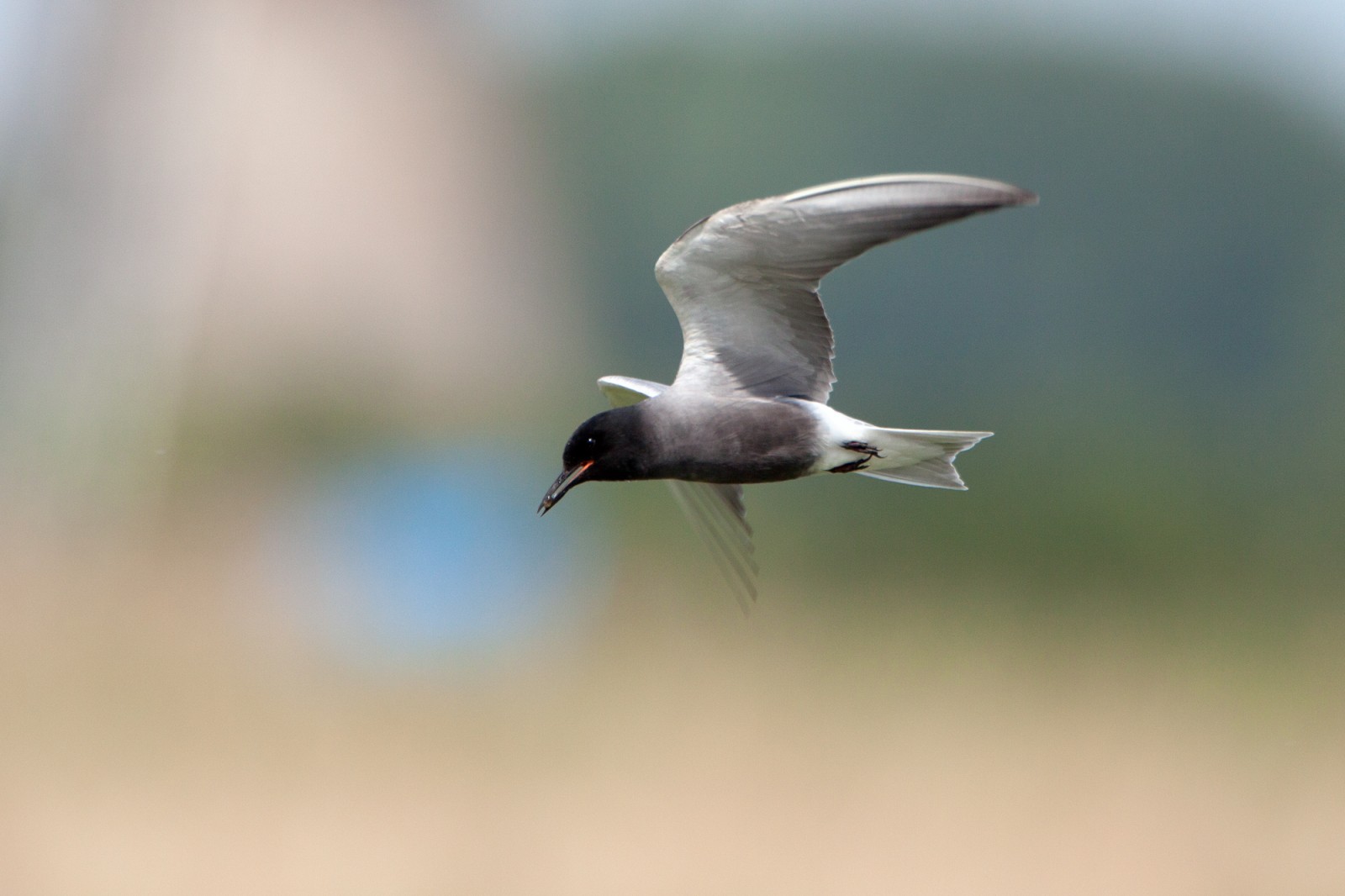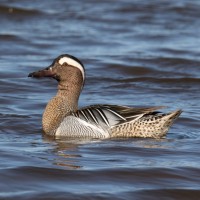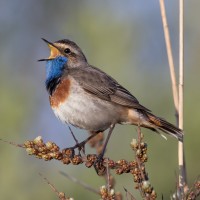Beskrivning
Bassins des Mizottes is made up of shallow brackish water basins but also of micro-reed beds. This area located in the Aiguillon bay offers a great diversity and quantity of species. In juxtapositions between dry marshes and land cultures and between the Mizottes and the Vasière de la Baie, this place is very suitable for observing migrating birds in stopover, but also wintering ones and breeding birds.
In Autumn, many birds take advantage of the richness of this area for a migratory stopover. We find in particular svartsnäppa or svarttärna and skäggtärna. Rarer, the smalnäbbad simsnäppa and vitvingad tärna nevertheless remain regular visitors. A little later in the year, around November-December, the grågås begin to arrive to winter in the Bay. The bläsgås, wintering in low numbers in the Bay of Aiguillon, are all the same fairly regular.
In winter, ducks are very numerous, mixing Skedand, snatterand, bläsand, gräsand, stjärtand, gravand and in large groups of several hundred or even several thousand individuals. The waders will also show up. You can find in particular the sandlöpare, kärrsnäppa, småsnäppa, större strandpipare for the little ones. But also kustpipare, ljungpipare, tofsvipa, myrspov, storspov, rödspov, rödbena or the gluttsnäppa.
In spring it is time for the breeding birds. You can see skärfläcka and styltlöpare with a few dozen pairs, the årta, often placed deep in the grass. A small colony of fisktärna also nests there, with about twenty pairs. Small songbirds like blåhake, grässångare or Sävsparv will land on top of large flowers and leaves to sing their melodies. On the side of the raptors, you find the ängshök, blå kärrhök and brun kärrhök which nest in nearby meadows and crops. The tornfalk, Brun glada and ormvråk pass very often in flight over this area. During the migrations, spring and autumn, many surprises await you, in particular the lost in Northern Europe, see Siberia.
_________________________
Français: Située dans la Baie de l'Aiguillon, cette zone d'environ 20Ha permet aux oiseaux nicheurs, migrateurs ou encore hivernants de trouver un refuge complet. Constituée de bassins d'eau saumâtre peu profonds mais aussi de micros-roselières, cette zone située dans la baie de l'Aiguillon offre une grande diversité et quantité d'espèces. En juxtapositions entre les marais desséchés et cultures des terres et entre les Mizottes et la Vasière de la Baie, ce lieu est tout à fait propice à l'observation des oiseaux migrateurs en halte, mais aussi des hivernants ou encore des nicheurs.
En Automne, de nombreuses espèces profitent de la richesse de cette zone pour une halte migratoire. On retrouve notamment les svartsnäppa ou encore svarttärna et skäggtärna. Plus rares, les smalnäbbad simsnäppa et vitvingad tärna restent néanmoins des visiteurs réguliers. Un peu plus tard dans l'année, vers Novembre-Décembre, les grågås commencent à arriver pour hiverner dans la Baie. Les bläsgås, hivernantes en faibles effectifs dans la Baie de l'Aiguillon, sont tout de même assez régulières.
En hiver, les Anatidés seront très nombreux, mélangeant les Skedand , snatterand , bläsand , gräsand , stjärtand , gravand et Kricka en grands groupes de plusieurs centaines, voir plusieurs milliers d'individus. Les Limicoles aussi se montreront. On retrouvera notamment les sandlöpare , kärrsnäppa, småsnäppa, större strandpipare pour les plus petits. On retrouvera aussi les kustpipare , ljungpipare , tofsvipa , myrspov , storspov , rödspov , rödbena ou encore les gluttsnäppa.
Au printemps, l'ambiance change pour laisser place aux nicheurs. On y retrouve donc les skärfläcka et styltlöpare avec quelques dizaines de couples, les årta , souvent placées bien au fond dans les herbes. Une petite colonie de fisktärna y niche aussi, avec une vingtaine de couples. Les petits passereaux comme les blåhake , les grässångare ou encore lesSävsparv se poseront au sommet des grandes fleurs et feuilles pour pousser leurs mélodies... Du côté des rapaces, on retrouve notament les ängshök , blå kärrhök et brun kärrhök qui nichent dans les prés et cultures proches. Les tornfalk , Brun glada et ormvråk passent très souvent en vol dans cette zone. Lors des migrations, printanières et automnales, de nombreuses surprisent vous attendent, notament les égarés d'Europe du Nord, voir de Sibérie.
Detaljer
Tillgänglighet
It is possible to park along the road, on a small path (see map).
_________________________
Français: Il est possible de se garer le long de la route, sur un petit chemin (voir carte).



